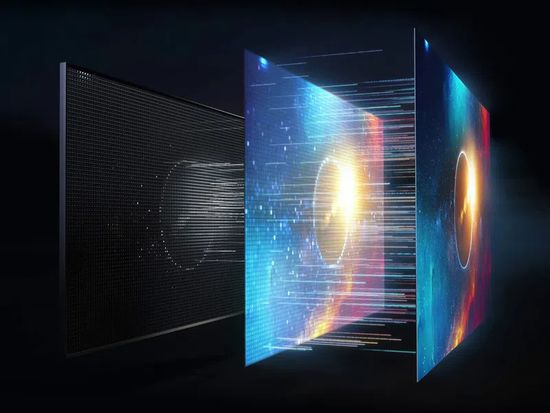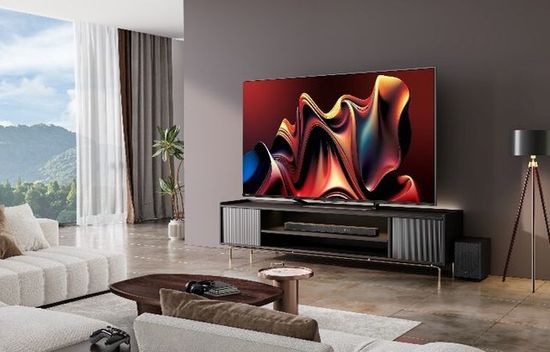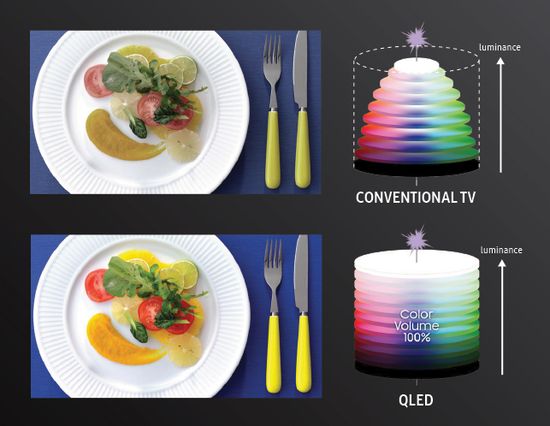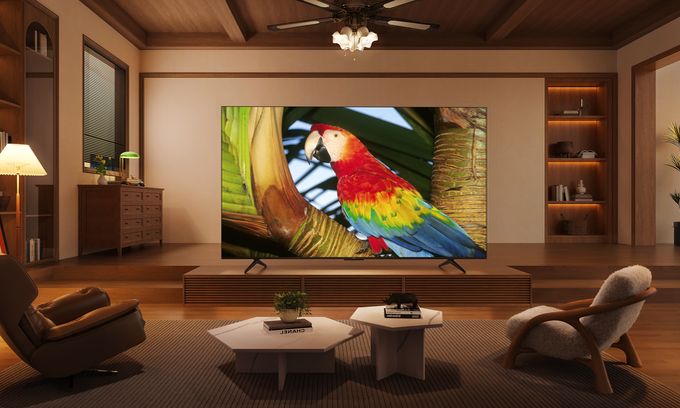The competition between Chinese giants Hisense and TCL is in many ways similar to the competition between South Korean giants Samsung and LG. As industry leaders, all companies dominate in innovative technologies.
TCL & Hisense TVs
An incomplete list of their most significant recent achievements includes:
– the Samsung S-series with hybrid QD-OLED panels;
– LG’s OLED Evo panel;
– Hisense’s Quantum ULED technology;
– TCL’s OD-Zero mini LED backlight.

In fairness, Japanese giant Sony also offers almost all the latest technologies, including, for example, Sony A95K (2022) and A95L (2023) with QD-OLED panels, which successfully compete with the Samsung S series. But today the brands are in different price segments. Sony highly values the innovation and reliability of its products, backed by an impeccable reputation for more than half a century. For reference, the first transistor Sony TV was introduced in 1960. However, already in 1966 and 1969, LG and Samsung introduced their first black and white televisions. But their models are traditionally cheaper.
Hisense and TCL joined the competitive battles in the 70s and 80s of the last century. Until recently, they were significantly cheaper and were radically inferior in terms of innovation and, accordingly, image quality. But over the past decade, this difference has almost disappeared. Moreover, Chinese companies managed to maintain a significant price advantage. As a result, the superb ratio of their price and quality causes an adequate reaction from the consumer market, ensuring a rapid increase in the popularity of these brands.
A comparison of their new flagships Hisense U8N and TCL QM851G actually did not reveal any winners. With a price difference of ~$ 200 (65-iInch Hisense and TCL – $ 1,300 vs $ 1,500), the models offer almost identical image quality. But, TCL is traditionally brighter (5,000 vs 3,000 nits), Hisense is more contrasty (9,450:1 vs 5,500:1 native contrast and 280,000:1 contrast with mini LED Pro-based local dimming).
TCL Q7 vs Hisense U7N
Comparison of the following TCL Q750G QLED and Hisense U7N also seems relevant. Unlike the flagships, the Hisense U7N is $ 200 more expensive than the TCL Q7 (65-inch Hisense and TCL – $ 1,000 vs $ 800).
Perhaps such price fluctuations are puzzling. In fact, the flagships are not very different from the models that follow them. This is probably due to the pricing strategy of the companies. But the difference between the 65″ Hisense U7N vs U8N is $ 300 ($ 1,000 vs $ 1,300). The price difference between the TCL Q7 vs TCL Q8 reaches $ 700 ($ 800 vs $ 1,500). At the very least, this aspect should draw attention when choosing between the TCL Q7 and Q8.
Both models are made entirely of plastic, but the TCL is thinner (2.76″/ 7.0 cm vs 3.07″ / 7.8 cm), and uses two feet with 2-position adjustable distance between them. Hisense has a central stand.

TVs use bright and contrasting VA panel and mini LED-based backlight (FALD – Full-Array Local Dimming technology).
The high performance of local dimming in both models virtually eliminates blooming around bright highlights against a black background.
In both TVs Game Mode performance in dark scene is similar to other picture modes. In addition, both models provide good upscaling and HDR gradient handling with minimal banding.
Their input lag varies from 6.4 ms vs 5.7 ms for 1080p@120Hz to 14.3 ms for 4k@60Hz + 10-bit HDR. Of course, the models support Variable Refresh Rate (VRR) and Auto Low Latency Mode (ALLM) in games.
The Smart OS of TCL and Hisense use 11 and 12 version of Google TV, respectively.
Tests
TCL has higher native contrast (9,614:1 vs 4,771:1). But the Hisense delivers higher dynamic contrast with local dimming (~ 89,000:1 vs 80,000:1) due to the use of more zones (384 vs 160 for 65″).
HDR / SDR brightness:
– peak 10% window ~ 685 vs 1,160 cd/m² (nits) / 760 vs 980 nits;
-‘- 50% window ~ 810 vs 935 nits / 780 vs 800 nits;
-‘- 100% window ~ 565 vs 710 nits / 550 vs 610 nits.
Color Gamut (range of reproduced colors)
~ 92% / 96% (xy / uv) vs 94% / 96% for DCI-P3 color space;
~ 67% / 73% vs 70% / 78% for BT. 2020 standard.
Color Volume
~ 64% vs 77% in DCI P3
~ 29% vs 37% for BT. 2020.
For reference, Color Volume characterizes the proportion of colors displayed by the TV from their total number within the P3 gamut with a brightness range from 0 to 1,000 cd/m². In fact, it illustrates the dependence of the display’s color reproduction on the brightness level. This is very important when displaying saturated and bright colors of HDR content.

Pre / Post calibration
– White Balance dE ~ 7.6 vs 5.1 / 0.7 vs 0.2 (good value < 3);
– Color dE (color accuracy) ~ 3.9 vs 2.7 / 1.0 vs 0.8 (good value < 3);
– Gamma ~ 2.1 vs 2.2 / 2.2 vs 2.2 (2.1-2.3);
– Color Temp ~ 6,500K vs 7,075K / 6,480K vs 6,519K (6,500K).
Reflections
Both models use semi-gloss screen finish, but their efficiency differs significantly:
– total reflections (reflected light in all directions – good value < 4.5%) - 5.9% vs 2.2%;
– indirect reflections (reflected light exckuding mirror-like reflections, good value < 1%) - 0.9% vs 0.2%.
Conclusion
Hisense pros:
– better SDR and HDR brightness (displays better highlights for HDR content);
– much better reflection handling (no glare at bright ambient light);
– more vibrant and brighter colors with wider color gamut and better color volume;
– better pre-calibration accuracy.
TCL pros:
– cheaper by $ 200 or ~20% ($ 800 vs $ 1,000).
Overall, Hisense shows a slight advantage in almost all aspects. But to be fair, it should be said that their importance is ambiguous. In particular, the brightness and contrast of both TVs are already excessive for SDR content. Probably, TCL is inferior in the reproduction of HDR content, but its share in the total video stream is still very limited. In particular, cable and satellite broadcasting practically only provides SDR due to the limited bandwidth of its networks. Today, HDR content is mostly available on Blu-ray discs and expensive subscriptions like Netflix. Therefore, the difference of ~ $ 200 (20%) seems quite adequate, and choice depends on the budget, personal attitude to brands and,of course, discounts.
This video demonstrates new Hisense U7N ULED mini LED Pro model.
